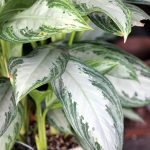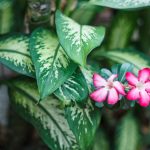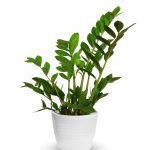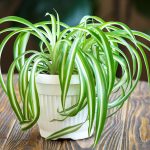We all know that plants need sunlight for photosynthesis, which is vital for their growth. However, there are situations when one desires to grow plants indoors in offices or at home.
Low light house plants are the ideal choice because they grow without sunlight, requiring only bright indirect light. But how do you know which plants possess this ability to thrive in the shade, growing happily in indirect sunlight? Which plants are able to adapt to decreased sunlight if you move them inside?
Sorting this out can seem cumbersome if you’re new to low light house plants. This article helps to identify plants with these abilities, and the most effective ways of ensuring their survival.
Chinese Evergreen (aglaonema)
 Known for its resilience and beautiful features, the Chinese evergreen easily comes to mind first. Though it seems to prefer good light and relatively high humidity due to its tropical origin, the Aglaonema also thrives admirably well in low light and low humidity.
Known for its resilience and beautiful features, the Chinese evergreen easily comes to mind first. Though it seems to prefer good light and relatively high humidity due to its tropical origin, the Aglaonema also thrives admirably well in low light and low humidity.
To recognize this plant, one just need to be observant of its graceful oblong leaves that grow from a central stem. The color of the leaves may be solid medium green or splotched with various shades of gray or lime green, depending on the plant species.
They should be ideally grown in a standard potting soil with bright reflected light and warm temperatures. This plant’s ability to tolerate pot-bound conditions for a long time makes it a suitable low light house plant.
Chinese Evergreens require frequent watering, and regular application of adequate fertilizer is required. However, this may not be necessary in regions that experience cold winter seasons.
Dumb Cane (dieffenbachia)
 This plant is sought after because of its generous size, impressive foliage and excellent tolerance of indoor conditions. Its leaves are easily identified, being variegated in greens and cream colors.
This plant is sought after because of its generous size, impressive foliage and excellent tolerance of indoor conditions. Its leaves are easily identified, being variegated in greens and cream colors.
Its flowers also have a unique appearance, with calla lilies forming on mature plants. The young plants are known to grow on single stems, while the older plants tend to develop multiple stems.
However children must not be allowed to play with its leaves, as the acrid sap can burn the mouth and throat when eaten. In worst-case scenarios, it may actually paralyze a human’s vocal chords.
Like the Chinese Evergreen, Dumb Can tolerates pot conditions quite well, and only needs water when the soil feels dry to touch. Take care with excessive watering and sunlight exposure, as these may actually damage the plant. In order to maintain its beauty, it is sometimes necessary to trim it back to 6 inches from the soil pot
ZZ Plant (zamioculcas zamiifolia)
 Zamioculcas zamiifolia commonly referred to as the ZZ plant. It is very slow in growing, but is greatly appreciated for its upright, glossy foliage that is vaguely reminiscent of cycad fronds.
Zamioculcas zamiifolia commonly referred to as the ZZ plant. It is very slow in growing, but is greatly appreciated for its upright, glossy foliage that is vaguely reminiscent of cycad fronds.
It leaves grow from the swollen base, and its soil must dry out between watering to ensure that it thrives in standard indoor potting soil. Direct sunlight will naturally scorch its leaves, so the ideal light source should be filtered or reflected.
This accommodation sounds a bit tricky, but there are a couple of ways to address it. If the plant is near a window, you can apply a light filter, or even coat the windowpanes in a transparent paint. You can also use ambient light from shaded lamps.
Spider Plant (chlorophytum comosum)
 Another plant well known for its unique growth habit is the spider plant (Chlorophytum comosum). The mother plant resembles long, broad grass blades that splay out much like a spider’s legs.
Another plant well known for its unique growth habit is the spider plant (Chlorophytum comosum). The mother plant resembles long, broad grass blades that splay out much like a spider’s legs.
It sends out long stem with baby plants at the ends. These baby plants starts as tiny white flowers at the end of the foot-long stems, protected by the long-leaved canopy of the mother plant.
Spider plants offer a robust and textured foliage to any corner of your home or office. The bright green spiking leaves, with their tiny flowers, are easy to care for with minimal need for direct light.
Conclusion
- Chinese Evergreens produce lovely multi-colored leaves that enjoy bright reflected lighting.
- Dumb Cane is a large plant that does well in containers, and produces gorgeous calla lillies.
- ZZ Plants offer a robust foliage that thrives in indirect lighting.
- Spider Plants provide prolific, bright green foliage that splays out much like monkey grass in your hedges.
It will be impossible to explore every available low light plant that does well inside your home, but these are a few of our favorites. With their unique characteristics and hardiness to indoor life, you’ve got some great choices for bringing new life to your home and office environments.
